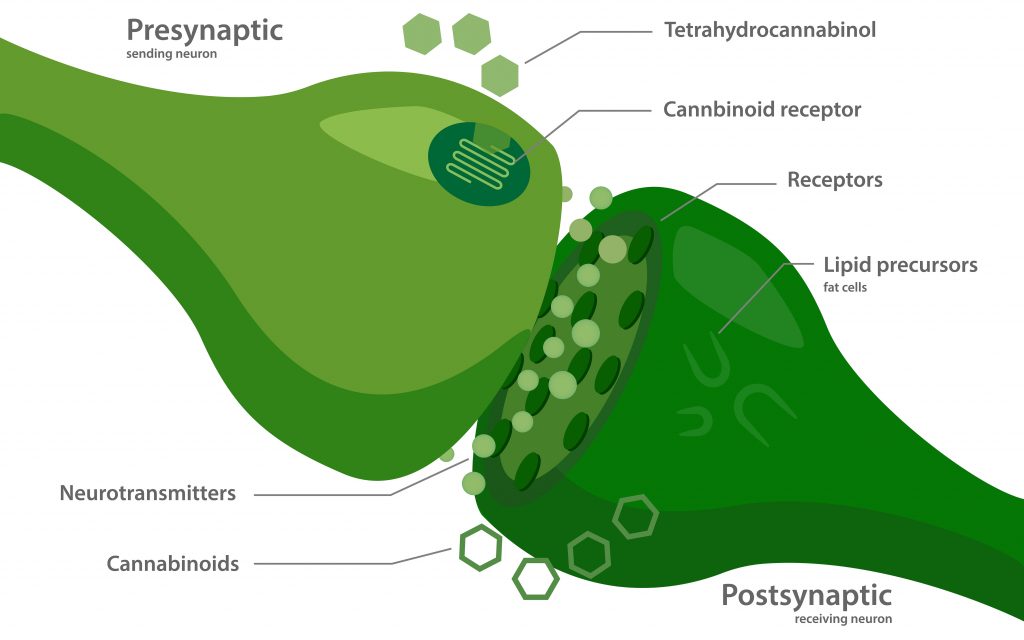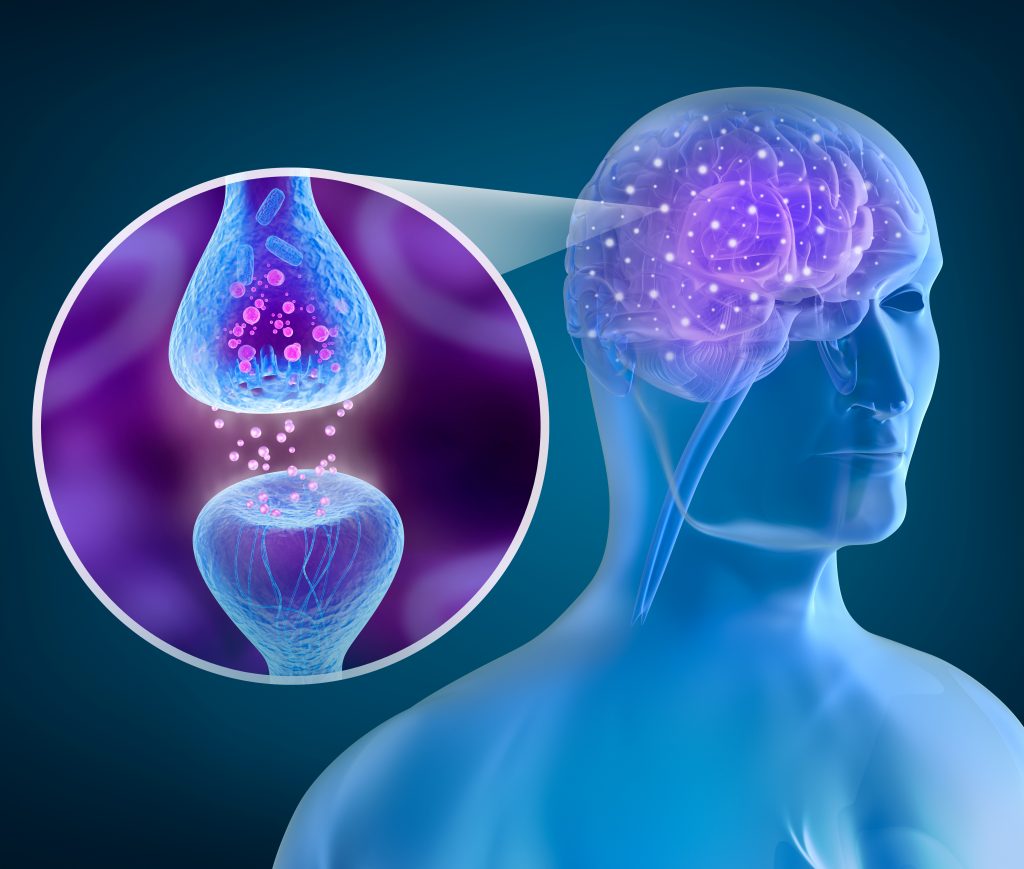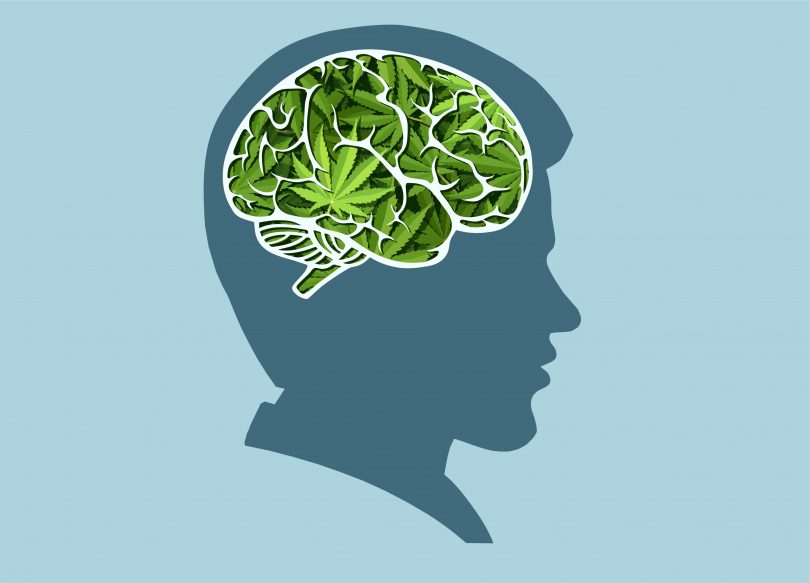We talk all the time about the two cannabis receptor sites in the body, CB1 and CB2. Scientists, however, have uncovered what appears to be a third cannabis receptor site, GPR55. What is this site? And how does it impact things like inflammation, cancer, and anxiety?
CB1 and CB2 might be the main cannabis receptors, but a third cannabis receptor site exists called GPR55. Perhaps in the future, this receptor site will play a bigger role in the research and development of cannabis products. For now, there are plenty up for grabs, including a growing array of cannabis cannabinoids including delta-8 THC, THCV, and even hemp-derived delta-9. No matter what your favorite delivery method, we’ve got a product for you. Check out our deals, and start your holiday shopping today!
CB1 and CB2
To start with, humans (and other animals) have an endocannabinoid system which is a neuromodulation network throughout the body. This system is highly important to central nervous system functioning, as well as being involved in synaptic plasticity, and the response to different stimuli, whether from inside or outside the body. The system involves cannabinoid receptors, endocannabinoids (or endogenous cannabinoids made in the body), and the enzymes that are required for the synthesis and degradation of endocannabinoids.
There is currently plenty of research going on involving the endocannabinoid system, and how it functions. Research findings have pointed at the endocannabinoid system being related to the regulation of cognitive as well as physiological processes, like fertility, pregnancy, and natal and early development.
It is also thought to play into immune activities; mood, emotion, and motivation; memory and learning; appetite; pain sensitivity and modulation; behaviors involving addiction; and neural functions like motor coordination and control. And of course we can’t forget its also responsible for producing the psychoactive effects of cannabinoids like delta-9 THC.

When it comes to the receptors, there are several, however the two of main interest, and which have been studied the most, are the CB1 and CB2 receptors. CB1 was first cloned in 1990, and those receptors are found mainly in the brain and nervous system throughout the body, including in other organs and tissue.
CB2 receptors are found in the brain (though far less than CB1 receptors), and in the immune system and gastrointestinal system. CB1 receptors therefore are regulators of neural transmissions and many peripheral purposes, and CB2 receptors are more geared toward regulating immune and inflammation pathways.
In terms of THC, “THC acts as a partial agonist at cannabinoid receptors (CB1 and CB2). A very high binding affinity of THC with the CB1 receptor appears to mediate its psychoactive properties (changes in mood or consciousness), memory processing, motor control, etc. It has been reported that a number of side effects of THC, including anxiety, impaired memory and immunosuppression, can be reversed by other constituents of the cannabis plant (cannabinoids, terpenoids, and flavonoids).”
Third cannabis receptor site – GPR55
CB1 and CB2 receptors are only two types of receptors found in the endocannabinoid system, but others exist. One atypical type of receptor, often thought of as the third cannabis receptor site, is GPR55. This receptor, first found in 1999, is still being studied, and not a whole lot is known about it for sure. However, it’s expected that it’s responsible for many of the effects of different cannabinoids, leading some to refer to it as cannabinoid receptor site 3. In actuality, it has not yet been given an official CB3 designation, but that could be coming.
GPR55 (or, G protein-coupled receptor 55) is thought of as a ‘type 3’ receptor, which is activated by cannabinoids like delta-9, as well as non-cannabinoid ligands. A ligand is a grouping of like molecules that can attach to receptor sites, and in this case refers to either endocannabinoids (made within the body), phytocannabinoids (produced by the plant), synthetic cannabinoids (made in a lab), and non-cannabinoids. So this means the receptor is activated by cannabis related compounds, and non-cannabis compounds as well.
GPR55 receptor actions have been seen in the nervous system; parts of the brain like the frontal cortex, cerebellum, striatum, hypothalamus, and brain stem; and in dorsal root ganglia neurons; the spleen; tonsils; adrenals; bones; endothelial cells; large intestine; lungs; kidneys; and adipose tissue (or body fat).

In the brain, these receptors seem to be related to the perception of pain, neuroprotection, anxiety issues, motor coordination, and substance abuse issues. Apart from these attributes, GPR55 is also thought to be involved in the formation of bone, the experience of neuropathic pain, inflammation, and fetoplacental development.
What third cannabis receptor site GPR55 shows in research
So, what is this third cannabis receptor site GPR55 known for? Well, its still being researched, but there are several different attributes it’s being studied for. One of them has to do with how these receptors effect cancer. These receptors are associated with many different kinds of cancer, and can be found within cancer cells.
One of the things about GPR55, is that it seems (at least at times) to promote the proliferation of cancer cells. In general, something that helps cancer spread is not thought of as good. In one study it was found that the knocking down of the GPR55 expression in glioma cells (essentially using glioma cells where GPR55 expression has been muted) was related to decreased tumor growth. As in, when the receptors weren’t functioning, tumors didn’t function as well either. Another study showed the expression of GPR55 in different prostate and ovarian cancer cell lines.
Learning how GPR55 effects cancer cells, is useful for understanding how cancers grow, and how to treat them. For example, recently developed antibodies that work against GPR55, can detect it’s expression at protein levels in tumor tissue and normal tissue. At CB1 and CB2 receptors, cannabinoids act as agonists, and have been shown to be useful for fighting cancer because of antiproliferative, antimetastatic, antiangiogenic, and pro-apoptotic effects. Agonists of GPR55 are known for their pro-cancer effects.
THC has been shown to be an agonist sometimes with GPR55, but not always, leading to reasonable confusion as to how the receptors are effected by delta-9, and whether the effect created is positive or negative.
One of the big avenues of research for this third cannabis receptor GPR55, is regarding its anti-inflammatory properties. For example, in one study, the increased expression of GPR55 suggested a relationship with intestinal inflammation. In fact, GPR55 seems to play a pro-inflammatory role according to some research. Other research shows the opposite, like it having an anti-inflammatory expression on mast cells, by way of inhibiting mast cell-mediated releases of nerve growth factor. Investigating different agonists and antagonists of GPR55 can help us better understand how it’s used for inflammatory and anti-inflammatory purposes. Both are necessary for bodily function.
The takeaway? “The orphan G-protein-coupled receptor 55 (GPR55) has been reported to modulate inflammation and is expressed in immune cells such as monocytes and microglia.” Of course, specifics to all this are still quite unknown.

Yet another attribute has to do with its use with anxiety, which is also still not well understood. In one study on mice with the GPR55 receptors silenced in the medial orbital cortex (knockout mice), it was found that use of O-1602 (synthetic compound somewhat related to abnormal CBD), which had previously shown to work as an anxiolytic in acutely stressed mice, no longer had this effect without use of the receptor. This indicates that the receptor might play an important role in experiencing anxiety, with its suppression effecting how anxiolytic compounds will behave.
GPR55’s existence in the central and peripheral nociceptive systems (the systems whereby we sense and experience pain), implies a possible ability to modulate these pathways. It has even been proposed that GPR55 (as well as receptor GPR18) could play a part in the experience of both acute and chronic pain. Research already suggests that GPR55 is related to the modulation of nociceptor excitability, meaning it can play a role in how we respond to painful stimuli. In terms of nerve damage, GPR55 was found to show mRNA expression in both the spinal cord and DRG (dorsal root ganglion) of nerve-damaged test rats, suggesting a link between GPR55 and neuropathic pain. Studies are across the board at the moment, with much further research needed.
Conclusion
Even though we talk about CB1 and CB2 receptors a lot, it doesn’t mean they’re the only ones at all, and in fact, other receptor sites have been found. Third cannabis receptor site GPR55 might not technically be called CB3 at the moment, but it might soon, and for good reason. It seems to play a big role in how cannabis is capable of effecting the body, though the jury is still out on exactly what this means in different contexts.
What is for sure is that cannabis is a plant with many and varied compounds capable of having many and varied effects. Perhaps GPR55 represents an avenue of cannabis we are still not as familiar with, and points us in an important direction for future cannabis study.
Welcome everyone! Thanks for stopping by CBDtesters.co, the best internet location for all cannabis and psychedelics-related news, offering up the most current and interesting stories of today. Come for a visit regularly to stay informed on the quickly-moving universe of legal drugs and industrial hemp, and don’t forget to check out the The Delta 8 Weekly Newsletter, to get every important news story first.
For more articles like this one, make sure to subscribe to The THC Weekly Newsletter. Also save big on Delta 8, Delta 9 THC, Delta-10 THC, THCO, THCV, THCP & HHC products by checking out our “Best-of” lists!
Disclaimer: Hi, I’m a researcher and writer. I’m not a doctor, lawyer, or businessperson. All information in my articles is sourced and referenced, and all opinions stated are mine. I am not giving anyone advise, and though I am more than happy to discuss topics, should someone have a further question or concern, they should seek guidance from a relevant professional.









